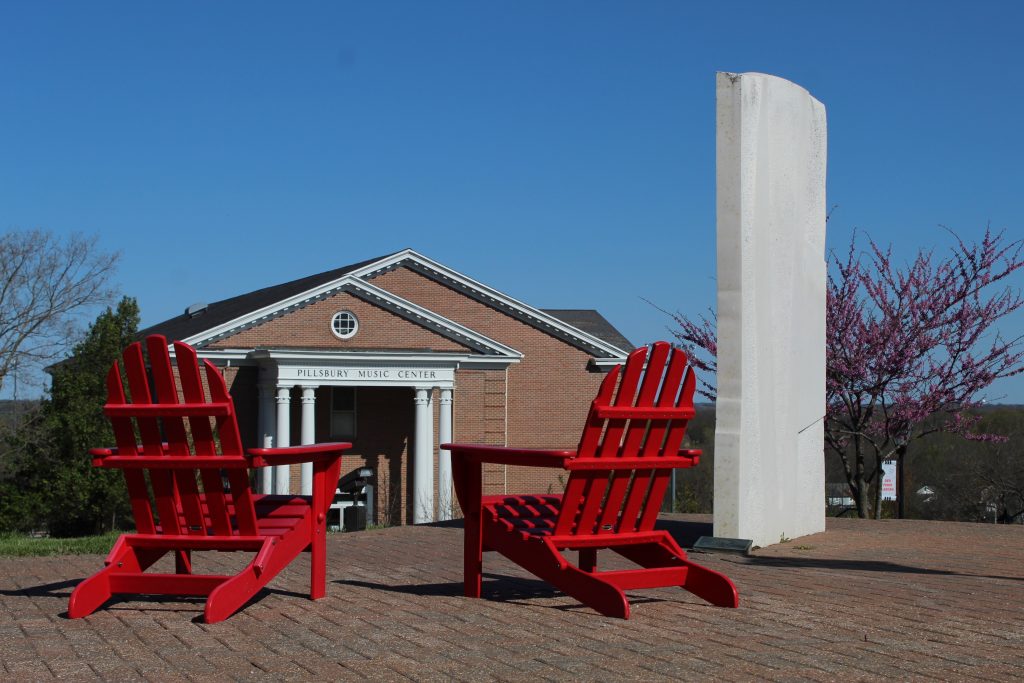
The history of William Jewell College dates all the way back to the mid-nineteenth century when the College was established in 1849 by prominent men in the Baptist Convention and in the community, well-supported by a large donation from William Jewell. From 1849 to 2003, Jewell was a Baptist college. During the Civil War, the campus was shut down and turned into grounds for a hospital, lookout, and a stable. It was not until the 1920s that Jewell welcomed women to the campus, and even later in history, they welcomed their first full-time Black student, Bill “Pee-Wee” Summers, in 1961.
Today, the campus looks completely different. Jewell remained expensive and therefore inaccessible for many individuals until recently. The College is attended by mostly white students and a low percentage of culturally diverse students. However, the admissions department is working hard to make the campus as diverse as the surrounding Kansas City area.
Eric Blair, vice president of enrollment and marketing, was ready and willing to share many different numbers, marketing strategies and all the efforts that have been implemented to diversify the campus. When talking about diversity, Blair acknowledges the wide field of identities – including BIPOC, low-income, first-generation, disabled, LGBT, international, LatinX students and more.
“We want to be more accessible as an institution to students. Taking that down from a verbiage or policy to the operational sense, we are being as representative as possible in our materials, in our visuals, and in our language,” said Blair.
Blair said that in recent years Jewell has started a “holistic” admission process. The program began because Jewell’s admissions team realized standardized tests like the ACT or SAT are sometimes a significant barrier, especially for students in low-income areas. Now, when looking at applications, these test scores are no longer a barrier. Admissions wants to see prospective students in the workforce and in any other community involvement possible. Blair says this puts an equity lens on the admission process so they can identify students of promise who otherwise may have slipped through the cracks because of standardized tests.
During the pandemic, many schools have done away with the need for these, often costly, tests. But Blair stressed that this has been an ongoing conversation at Jewell for years now, and they have no intention of stopping this holistic admission process after the pandemic.
“Most students didn’t pay anything near the published tuition, but that got lost in that sticker price,” said Blair. “It was counterproductive to the message of accessibility to say ‘here’s this big price out here. We’re an elite private institution, you have to have an elite pocketbook to access the institution.’ This just wasn’t the case, so we worked to clarify that.”
Both the departments of financial aid and admissions hope this message will debunk the idea that, for a Jewell education, you have to have a pocketbook bigger than the campus itself. Blair said admissions wants students to come to campus and see themselves before even committing to Jewell. They want to have multiple different communities available from the moment a student steps onto campus in order to celebrate as many students as possible. Blair emphasized that representation matters, and while this conversation of representation is important, the numbers speak for themselves.
“Our BIPOC students have increased from single digit numbers to 27 percent over the last couple of decades,” Blair said. “That was sped up in the mid-2000s, so really in the last 15 years. We are trying to do more.”
When thinking about the BIPOC percentage in the Kansas City Metro area, Jewell wants to be as representative of the region as possible. He says they have a goal to have over a third of the campus be racially and ethnically diverse. The class of 2024 is the most diverse in the history of the College, which demonstrates a commitment to these goals.
Blair emphasized that this number can be skewed in multiple ways. If they said the school is 36 percent diverse in a broad sense, they also have to acknowledge that the cohort grew, clarifying that the last class grew 12 percent. Incrementally, the number grew, and this is their main focus.
Blair stated that without a “huge tapestry” of backgrounds, students cannot enjoy a rich classroom experience. Jewell wants to continue welcoming as many students from as many backgrounds as possible for the sake of diversity and learning but also from a monetary standpoint. Blair knows that the campus needs students to pay the bills and keep being sustainable as a not-for-profit institution but also knows that only doing this with white students is not helpful to the campus mission.
“We are not fulfilling our mission if we found ways to be sustainable through only white students,” Blair said. “Yes, we could meet the goal to be sustainable, but we would lose the other mission of creating a diverse campus that all students could enjoy.”
It appears as though Jewell is pushing hard to make the campus as diverse as possible to make as many students as possible feel welcome. In the coming years students, faculty and staff will keep voicing concerns and pushing for change. Despite progress not always being explicitly clear, conversations are continually being had in conference rooms (or, more likely, Zoom calls) about how to improve Jewell’s diversity and inclusion.
